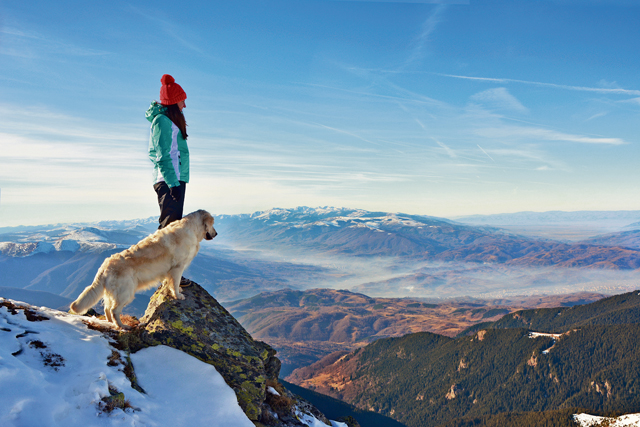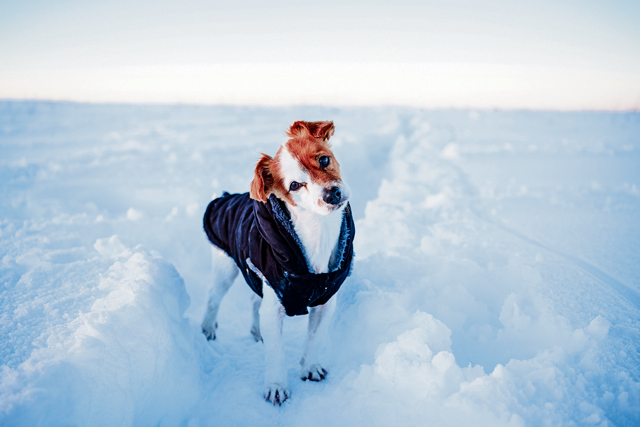
Hiking during winter months as the world transforms into a snow-covered wonderland can be a magical experience. One of the most striking aspects of winter hiking is the silence that blankets the landscape and the breathtaking views. And who to better share it with than your four-legged companion?
When it comes to winter hiking with your dogs, there are some important things to remember.
Not every dog is suited to hike in the cold. Some breeds, like the different types of sled dogs, are made for the cold weather and will need little or almost no gear. Breeds with longer fur might be able to stay warm longer but are prone to snow clumping. Short-haired dogs, or breeds without an undercoat will get cold faster. Remember too, that smaller dogs will have a harder time hiking through deep snow. Your dog should be physically fit and puppies or elderly dogs are better kept at home.
Even if your dog’s breed is built for cold climates, they might not be used to long hikes in snow. Tailor your hikes to the needs of your dog and start with a shorter distance. The distance can always be increased over time considering your dog’s ability. Also remember that during the winter season trails may take longer and be tougher to hike than in warmer seasons. So, before you go on a hike check the trail conditions, since they can vary day to day, and rules, since some might not allow dogs during winter months.

Check the temperature to make sure it isn’t too cold. If it is above freezing, you can go on longer hikes. If there is any chance of a storm coming in or high winds leave your companion at home. During the risk of a whiteout or low visibility conditions, stay at home. Remember dogs can get frostbite too, so if you need a balaclava, limit your time outside. If there is fresh snow and you will need to break trails, go on a shorter hike.
There are a lot of gear options that can help keep your dog comfortable and safe during a winter hike. From coats to dog shoes, even googles and sleeping bags are available. The clothing must be moisture-repellent and warm. Remember to bring winter-proof snacks and food, an insulated bottle with water and a foldable bowl. An insulated pad for your dog to lay on is also recommended, as direct contact with the cold ground should be, depending on breed, avoided. Bring a first aid kit, so you can treat injuries to paws caused by ice.
Keep your dog on a leash and harness in high-risk areas, and be careful around lakes, streams and avoid avalanche areas altogether.
Pay attention to your dog and recognize their cues. If they start shivering, licking, chewing, dragging their paws it is time to stop. Other signs can be changes in behavior as in walking slower or their head is down instead of their usual alter posture, whining, whimpering, or barking, cold ears, inconsistent when it comes to recall or sitting down all together and not moving.
Be respectful of other hikers and remember that some might not like dogs as much as you do. Keep your dog from disturbing wild animals and always clean up after your dog.


